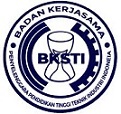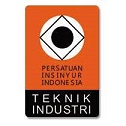Aplikasi Metode Kano Berdasarkan Dimensi Service Quality Untuk Mengukur Kepuasan Pelanggan Pada Hotel X
Abstract
Study Kasus Penelitian ini berada pada Hotel X, Hotel ini merupakan hotel yang memiliki fasilitas yang cukup memadai dibanding hotel kompetitor terdekatnya. Permasalahan yang terjadi adalah jumlah pengunjung Hotel X selama tahun 2022 terjadinya penurunan cukup signifikan setiap bulannya dibanding dengan tahun 2021. Penelitian ini bertujuan merancang kualitas pelayanan agar konsumen nyaman dan meningkat kepuasannya serta berpengaruh terhadap loyalitas konsumen. Metode yang digunakan Metode Kano, sampel sebanyak 100 orang responden yang diambil dengan teknik purposive sampling dan perancangan kualitas pelayanan menggunakan berdasarkan hasil pengolahan terhadap terdapat 10 pernyataan yang dijadikan indikator pengukuran pada dimensi service quality (Servqual). Tiga faktor yang perlu diperhatikan lagi yaitu atribut yang masuk dalam kategori Must Be adalah karyawan siap membantu konsumen bila mengalami kesulitan, untuk kategori One dimensional adalah terdapatnya ruangan yang sangat wangi hingga ruangan menjadi fresh, dan kategori attractive adalah kebersihan kamar yang sangat nyaman. Untuk atribut kebersihan kamar yang nyaman saran perbaikannya adalah karyawan harus lebih memperhatiakan lagi kebersihan dalam kamar agar lebih nyaman sehingga keinginan dan kepuasan konsumen terpenuhi.
Full Text:
PDFReferences
S. Bello, “Carcinogenic and non-carcinogenic health risk assessment of heavy metals exposure from Shanono and Bagwai artisanal gold mines, Kano state, Nigeria,” Sci. African, vol. 6, 2019, doi: 10.1016/j.sciaf.2019.e00197.
N. Jain, “Sustainable supplier selection criteria classification for Indian iron and steel industry: a fuzzy modified Kano model approach,” Int. J. Sustain. Eng., vol. 13, no. 1, pp. 17–32, 2020, doi: 10.1080/19397038.2019.1566413.
A. Rese, “The need for services and technologies in physical fast fashion stores: Generation Y’s opinion,” J. Mark. Manag., vol. 35, no. 15, pp. 1437–1459, 2019, doi: 10.1080/0267257X.2019.1665087.
J. Żywiołek, “Perception of the quality of smart city solutions as a sense of residents’ safety,” Energies, vol. 14, no. 17, 2021, doi: 10.3390/en14175511.
S. Usman, “The core group partners project in North East Nigeria: Community engagement strategies to combat skepticism and build trust for vaccine acceptance,” Am. J. Trop. Med. Hyg., vol. 101, no. 4, pp. 68–73, 2019, doi: 10.4269/ajtmh.19-0143.
Y. Qu, “Integrating fuzzy Kano model and fuzzy analytic hierarchy process to evaluate requirements of smart manufacturing systems,” Concurr. Eng. Res. Appl., vol. 27, no. 3, pp. 201–212, 2019, doi: 10.1177/1063293X19845137.
M. C. Chen, “Service quality and customer satisfaction in pharmaceutical logistics: An analysis based on Kano model and importance-satisfaction model,” Int. J. Environ. Res. Public Health, vol. 16, no. 21, 2019, doi: 10.3390/ijerph16214091.
S. D. Müller, “Mobile app support for cardiopulmonary resuscitation: Development and usability study,” JMIR mHealth uHealth, vol. 9, no. 1, 2021, doi: 10.2196/16114.
Y. Meng, “An analysis of university students’ health information service needs from academic library in the post-COVID-19 age through Kano model,” Libr. Hi Tech, vol. 39, no. 3, pp. 711–721, 2021, doi: 10.1108/LHT-01-2021-0035.
P. Madzík, “Capture and evaluation of innovative ideas in early stages of product development,” TQM J., vol. 31, no. 6, pp. 908–927, 2019, doi: 10.1108/TQM-02-2019-0050.
Y. S. Cheng, “Integrating the Kano model and IPA to measure quality of museum interpretation service: a comparison of visitors from Taiwan and Mainland China,” Asia Pacific J. Tour. Res., vol. 24, no. 6, pp. 483–500, 2019, doi: 10.1080/10941665.2019.1591474.
J. Li, “User demands analysis of Eco-city based on the Kano model-An application to China case study,” PLoS One, vol. 16, no. 3, 2021, doi: 10.1371/journal.pone.0248187.
T. Kreuzer, “Customer-centric prioritization of process improvement projects,” Decis. Support Syst., vol. 133, 2020, doi: 10.1016/j.dss.2020.113286.
M. Dharwal, “Water pollution: Effects on health and environment of Dala LGA, Nigeria,” Materials Today: Proceedings, vol. 49. pp. 3036–3039, 2020. doi: 10.1016/j.matpr.2020.10.496.
P. Jitaru, “Occurrence of 30 trace elements in foods from a multi-centre Sub-Saharan Africa Total Diet Study: Focus on Al, As, Cd, Hg, and Pb,” Environ. Int., vol. 133, 2019, doi: 10.1016/j.envint.2019.105197.
S. I. Abba, “Multi-parametric modeling of water treatment plant using AI-based non-linear ensemble,” J. Water Supply Res. Technol. - AQUA, vol. 68, no. 7, pp. 547–561, 2019, doi: 10.2166/aqua.2019.078.
S. U. Abdullahi, “Stroke Recurrence in Nigerian Children With Sickle Cell Disease: Evidence for a Secondary Stroke Prevention Trial,” Pediatr. Neurol., vol. 95, pp. 73–78, 2019, doi: 10.1016/j.pediatrneurol.2019.01.008.
C. C. Tseng, “An IPA-Kano model for classifying and diagnosing airport service attributes,” Res. Transp. Bus. Manag., vol. 37, 2020, doi: 10.1016/j.rtbm.2020.100499.
S. Lou, “Data-driven customer requirements discernment in the product lifecycle management via intuitionistic fuzzy sets and electroencephalogram,” J. Intell. Manuf., vol. 31, no. 7, pp. 1721–1736, 2020, doi: 10.1007/s10845-018-1395-x.
E. Loučanová, “Identification of customers’ drivers for the wood building as an ecological innovation in building construction in slovakia,” Acta Fac. Xylologiae Zvolen, vol. 62, no. 1, pp. 177–188, 2020, doi: 10.17423/afx.2020.62.1.15.
M. Bajehson, “Determinants of mortality among patients with drug-resistant tuberculosis in northern Nigeria,” PLoS One, vol. 14, no. 11, 2019, doi: 10.1371/journal.pone.0225165.
B. Wang, “Customer satisfaction service match and service quality-based blockchain cloud manufacturing,” Int. J. Prod. Econ., vol. 240, 2021, doi: 10.1016/j.ijpe.2021.108220.
P. H. Chou, “Using Kano diagrams to display the most cited article types, affiliated countries, authors and MeSH terms on spinal surgery in recent 12 years,” Eur. J. Med. Res., vol. 26, no. 1, 2021, doi: 10.1186/s40001-021-00494-x.
H. N. Salwa, “Conceptual design and selection of natural fibre reinforced biopolymer composite (NFBC) takeout food container,” J. Renew. Mater., vol. 9, no. 4, pp. 803–827, 2021, doi: 10.32604/jrm.2021.013977.
R. Adeleke, “Digital divide in Nigeria: The role of regional differentials,” African J. Sci. Technol. Innov. Dev., vol. 13, no. 3, pp. 333–346, 2021, doi: 10.1080/20421338.2020.1748335.
M. U. Mohammed, “In search of missing links: urbanisation and climate change in Kano Metropolis, Nigeria,” Int. J. Urban Sustain. Dev., vol. 11, no. 3, pp. 309–318, 2019, doi: 10.1080/19463138.2019.1603154.
B. Nyilitya, “Tracking sources and fate of groundwater nitrate in Kisumu City and Kano Plains, Kenya,” Water (Switzerland), vol. 12, no. 2, 2020, doi: 10.3390/w12020401.
M. Li, “Integrating Kano Model, AHP, and QFD methods for new product development based on text mining, intuitionistic fuzzy sets, and customers satisfaction,” Math. Probl. Eng., vol. 2021, 2021, doi: 10.1155/2021/2349716.
A. Ishak, “Integration of Kano Model and Quality Function Deployment (QFD) to Improve Product Quality: A Literature Review,” IOP Conference Series: Materials Science and Engineering, vol. 1003, no. 1. 2020. doi: 10.1088/1757-899X/1003/1/012025.
I. Uzun, “A novel approach for classification of occupational health and safety measures based on their effectiveness by using fuzzy kano model,” J. Intell. Fuzzy Syst., vol. 38, no. 1, pp. 589–600, 2020, doi: 10.3233/JIFS-179432.
L. Ingenbleek, “Human dietary exposure to chemicals in sub-Saharan Africa: safety assessment through a total diet study,” Lancet Planet. Heal., vol. 4, no. 7, 2020, doi: 10.1016/S2542-5196(20)30104-2.
M. Hartono, “The modified Kansei Engineering-based application for sustainable service design,” Int. J. Ind. Ergon., vol. 79, 2020, doi: 10.1016/j.ergon.2020.102985.
M. C. Ngwa, “The cholera risk assessment in Kano state, Nigeria: A historical review, mapping of hotspots and evaluation of contextual factors,” PLoS Negl. Trop. Dis., vol. 15, no. 1, pp. 1–19, 2021, doi: 10.1371/journal.pntd.0009046.
L. F. Luque-Vega, “Smart cities oriented project planning and evaluation methodology driven by citizen perception-IoT smart mobility case,” Sustain., vol. 12, no. 17, 2020, doi: 10.3390/su12177088.
C. Jin, “Predicting the Use of Brand Application Based on a TRAM,” Int. J. Hum. Comput. Interact., vol. 36, no. 2, pp. 156–171, 2020, doi: 10.1080/10447318.2019.1609227.
A. M. Bigorra, “Aspect-based Kano categorization,” Int. J. Inf. Manage., vol. 46, pp. 163–172, 2019, doi: 10.1016/j.ijinfomgt.2018.11.004.
B. Musa, “Multi-state load demand forecasting using hybridized support vector regression integrated with optimal design of off-grid energy Systems—a metaheuristic approach,” Processes, vol. 9, no. 7, 2021, doi: 10.3390/pr9071166.
DOI: http://dx.doi.org/10.24014/jti.v8i2.20430
Refbacks
- There are currently no refbacks.
Copyright (c) 2022 Miranti Putry

This work is licensed under a Creative Commons Attribution-NonCommercial-ShareAlike 4.0 International License.
Jurnal Teknik Industri
P-ISSN 2460-898X | E-ISSN 2714-6235
Published by:
Industrial Engineering Department
Universitas Islam Negeri Sultan Syarif Kasim Riau, Indonesia
Office Address:
H.R. Soebrantas KM 15.5, Tampan, Pekanbaru, Riau, Indonesia 28293
email: jti.fst@uin-suska.ac.id
Indexed by:
JTI : Jurnal Teknik Industri under a Creative Commons Attribution-NonCommercial-ShareAlike 4.0 International License.

















